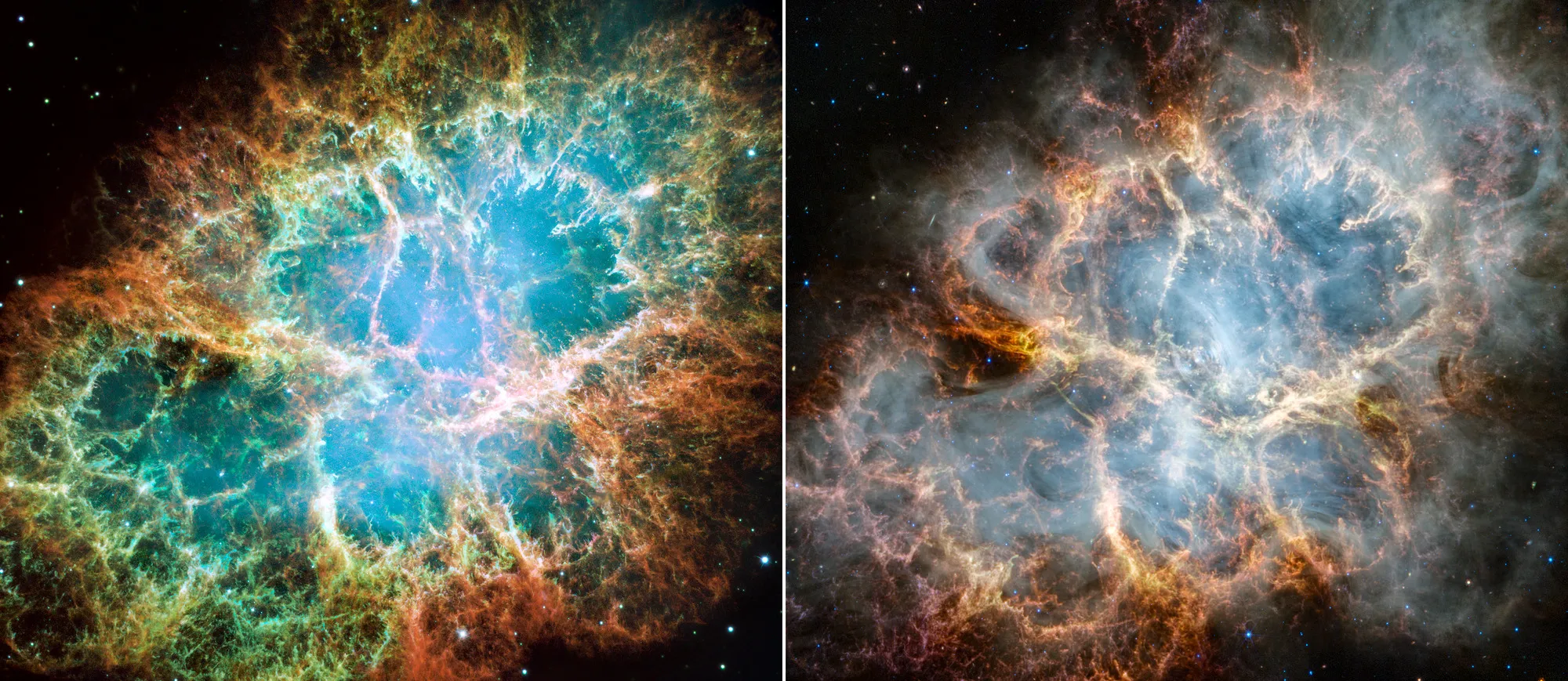The James Webb Space Telescope (JWST) has released its first images of the Crab Nebula, and they are truly breathtaking. The images are the sharpest and deepest ever taken of this iconic object, and they reveal new details about its structure and composition.
Key Highlights:
- JWST’s images of the Crab Nebula are the sharpest and deepest ever taken.
- The images reveal new details about the nebula’s structure and composition.
- However, the mass of the nebula remains a mystery.
The Crab Nebula is the remnant of a supernova that exploded in 1054 AD. It is one of the most studied objects in the night sky, and astronomers have learned a great deal about it over the centuries. However, there is still one mystery that remains unsolved: the mass of the nebula.
Based on our understanding of supernova explosions, the Crab Nebula should contain at least 4-5 solar masses of material. However, all attempts to measure the nebula’s mass have fallen short. The best estimates suggest that the nebula contains only 2-3 solar masses of material.
The new images from JWST may help to solve this mystery. The images reveal that the nebula is much more complex than previously thought. The nebula is made up of a dense network of filaments and filaments, and it is also home to a large population of dust grains.
Astronomers are now using the new images to create a more comprehensive model of the nebula. They hope that this model will help them to finally determine the nebula’s mass.
In addition to the mass mystery, the new images from JWST have also revealed other new details about the Crab Nebula. For example, the images show that the nebula is home to a population of young stars. These stars formed from the material that was ejected during the supernova explosion.
The new images from JWST are a treasure trove of information for astronomers. They are helping us to learn more about the Crab Nebula and the supernova that created it.
The James Webb Space Telescope has released its first images of the Crab Nebula, and they are truly breathtaking. The images are the sharpest and deepest ever taken of this iconic object, and they reveal new details about its structure and composition.
However, one mystery remains unsolved: the mass of the nebula. Based on our understanding of supernova explosions, the Crab Nebula should contain at least 4-5 solar masses of material. However, all attempts to measure the nebula’s mass have fallen short. The best estimates suggest that the nebula contains only 2-3 solar masses of material.
Astronomers are now using the new images from JWST to create a more comprehensive model of the nebula. They hope that this model will help them to finally determine the nebula’s mass.
